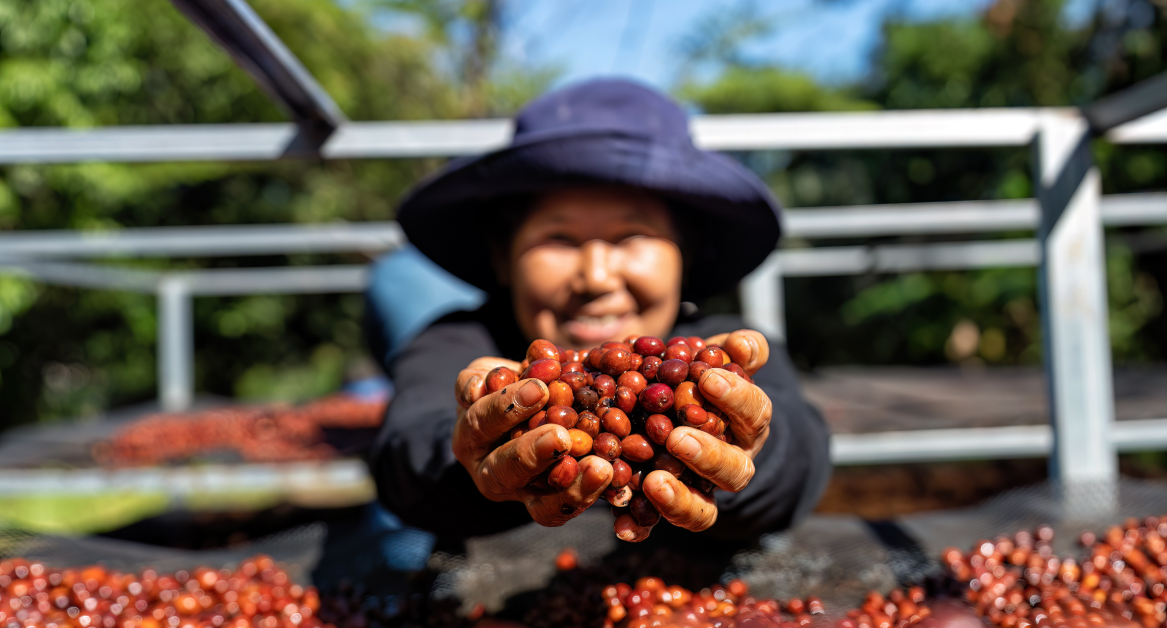Water is the lifeblood of agriculture, and efficient water management is key to regenerative farming. In this guide, we’ll explore advanced water conservation methods that not only reduce waste but also enhance farm health. From smart irrigation to rainwater harvesting, discover how to maximize water efficiency and minimize your farm’s water footprint.
Let’s dive in and unlock the potential of water conservation for a thriving, sustainable farm.
🌏 Extra reading: 14 Sustainable Agriculture Practices That Benefit the Planet
Smart irrigation systems: maximizing efficiency
Smart irrigation systems are revolutionizing the way farmers manage water resources. These systems leverage technology and data to ensure precise and efficient watering, reducing water wastage significantly.
Key features:
Soil moisture sensors: Smart systems use soil moisture sensors to detect the actual moisture levels in the soil. This data informs the irrigation schedule, ensuring that crops receive just the right amount of water, preventing overwatering.
Weather-based adjustments: These systems integrate real-time weather data to adjust irrigation schedules. If rain is in the forecast, the system may turn off the water to avoid unnecessary watering.
Remote control: Farmers can monitor and control irrigation remotely through mobile apps or computer interfaces. This feature provides flexibility and ensures that water is applied precisely when needed.
Drip and sprinkler integration: Smart systems can work with various irrigation methods, including drip and sprinkler systems, allowing for customization based on crop and field requirements.
Benefits:
- Water efficiency: By optimizing water usage, smart irrigation reduces water wastage, conserving this precious resource.
- Cost savings: Farmers can save on water and energy costs, as well as reduce labor expenses through automation.
- Improved crop health: Precise watering leads to healthier crops with reduced risk of diseases caused by overwatering.
Drip irrigation: targeted water delivery
Drip irrigation is a highly efficient method that delivers water directly to the root zones of plants, minimizing water loss due to evaporation and runoff. It involves a network of tubes, pipes, and emitters that release small, controlled amounts of water.
Key features:
Water conservation: Drip systems significantly reduce water wastage by delivering water precisely where it’s needed.
Nutrient efficiency: Along with water, drip systems can deliver fertilizers directly to plant roots, enhancing nutrient uptake.
Weed control: Since water is targeted at the crop’s root zone, there is less moisture available for weed growth.
Crop yield: Consistent and controlled watering promotes healthy growth and can lead to higher crop yields.
Suitable for various crops: Drip irrigation can be adapted to various crop types, including row crops, orchards, and vineyards.
Benefits:
- Sustainability: It reduces the reliance on traditional water sources, making farming more sustainable.
- Cost savings: By reducing the amount of water, farmers can cut down on their water bills.
Rainwater harvesting techniques: nature’s gift
Rainwater harvesting is a sustainable practice that involves collecting and storing rainwater for later use in irrigation. It’s a straightforward yet highly effective method of water conservation.
Key features:
Collection surfaces: Rainwater is collected from rooftops, greenhouses, or other impermeable surfaces.
Gutters and downspouts: These direct rainwater into storage tanks or cisterns.
Storage tanks: Rainwater is stored in tanks or cisterns, often equipped with filtration systems to remove debris and contaminants.
Distribution system: Pumps and pipes distribute collected rainwater to irrigation systems.
Benefits:
- Sustainability: It reduces the reliance on traditional water sources.
- Cost savings: By using free rainwater, farmers can reduce their water bills.
- Environmental impact: Rainwater harvesting reduces stormwater runoff, which can carry pollutants into rivers and streams.
- Drought resilience: Stored rainwater provides a buffer during dry periods, ensuring a continuous water supply for crops.
Soil moisture conservation practices: nurturing healthy soil
Conserving soil moisture is essential for sustainable farming. It involves practices that help retain moisture in the soil and hinder water flow, which will reduce the need for excessive irrigation. Healthy soil with good moisture levels is the foundation for robust crop growth.
Key features:
Mulching: Applying mulch, such as organic matter or straw, to the soil’s surface helps reduce evaporation and keeps the soil cool. It also prevents weed growth, conserving moisture for crops.
Cover cropping: Planting cover crops like clover or rye during fallow periods helps improve soil structure and moisture retention. These cover crops act as a natural mulch.
Reduced tillage: Minimizing soil disturbance through reduced tillage practices helps maintain soil structure, and reduce runoff.
Compost application: Adding compost to the soil enhances its water-holding capacity. Organic matter in compost acts like a sponge, retaining moisture.
Benefits:
- Water efficiency: Soil moisture conservation reduces the need for frequent irrigation, and improves water saving.
- Improved soil health: Healthy soil with adequate moisture levels promotes better root development and nutrient uptake by plants.
- Weed suppression: Mulching and cover cropping help suppress weed growth, reducing competition for water.
Crop selection and rotation: strategic planting for water efficiency
Strategic crop selection and rotation are integral to water conservation in farming. Choosing the right crops and rotating them judiciously can optimize water usage and enhance soil health.
Key features:
Drought-tolerant varieties: Opt for crop varieties that are well-suited to your region’s climate. Drought-tolerant crops require less water.
Crop rotation: Rotate crops to break pest and disease cycles and improve soil health. Certain crop rotations can also reduce water demands.
Companion planting: Planting complementary crops together can help conserve moisture and deter pests.
Timing: Plan planting and harvesting times to align with the natural rainfall patterns in your area, reducing the need for irrigation.
Benefits:
- Optimized water usage: Choosing the right crops and rotation patterns reduces water requirements, making farming more sustainable.
- Improved soil quality: Crop rotation improves soil fertility and structure, enhancing its ability to retain moisture.
- Pest and disease control: Smart crop selection and rotation can reduce the risk of pest and disease outbreaks, limiting the need for chemical treatments.
Water recycling and reuse: closing the loop
Water recycling and reuse is a sustainable practice that involves treating and reusing wastewater in agricultural operations. It’s a way to make the most of available water resources and reduce the environmental impact of farming.
Key features:
Treatment systems: Implement wastewater treatment systems to purify water for reuse. This can involve physical, chemical, or biological treatments.
Storage and distribution: Store treated water in reservoirs or tanks and distribute it through irrigation systems.
Irrigation management: Use recycled water for non-potable irrigation needs, such as field crops or orchards.
Water quality monitoring: Regularly test the quality of recycled water to ensure it meets safety standards for agricultural use.
Benefits:
- Water conservation: Recycling and reusing water reduce the demand on freshwater sources.
- Cost savings: Farms can save on water costs and wastewater disposal fees.
- Environmental impact: Properly treated and managed recycled water minimizes the environmental impact of agricultural operations.
Controlled grazing: sustainable livestock management
Controlled grazing is a water-efficient approach to managing livestock while preserving pasture health. It involves carefully planned grazing patterns and rotational systems to prevent overgrazing and promote sustainable land use.
Key features:
Rotational grazing: Divide pastures into smaller paddocks and rotate livestock between them. This allows grazed areas to recover and regrow while minimizing soil erosion and nutrient runoff.
Rest periods: Provide rest periods for pastures to allow vegetation to thrive and capture rainwater effectively.
Water source management: Ensure that water sources for livestock are strategically placed to reduce trampling and soil erosion.
Monitoring: Regularly monitor pasture conditions and adjust grazing patterns as needed to maintain healthy vegetation.
Benefits:
- Water efficiency: Controlled grazing reduces soil erosion, which can contribute to water pollution, and preserves pasture health.
- Pasture improvement: Grazing management enhances pasture quality and resilience, providing better forage for livestock.
- Sustainable livestock: Livestock can thrive in a healthier environment, reducing the need for supplemental feeding.
Financing optimal water management with RegenX
By adopting these best practices, farmers benefit the environment, save costs, improve crop and soil health, and address the challenges of climate change. Our choice today can secure livelihoods and contribute to global food security in an era of water scarcity.
At RegenX, we are committed to supporting farmers in their journey towards sustainable agriculture. Our innovative financial solutions empower farmers to implement regenerative practices that conserve water, enhance soil health, and promote overall sustainability while improving their income and livelihood.



